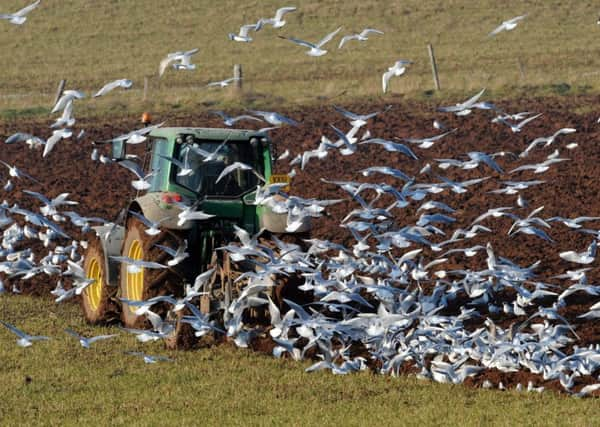Scots farm incomes fall by half in just four years


The Scottish Government’s annual farm accounts survey shows average farm business income fell by a quarter, or £8,000, between 2013 and 2014, to a new record low of £23,000.
Income has been falling from a peak of £51,000 in 2010. Since then commercial farms have experienced a decrease in income of 55 per cent.
Advertisement
Hide AdAdvertisement
Hide AdConverting the income estimates to hourly income for unpaid labour – from farm owners, family members and business partners – shows that the income generated from almost half of farm businesses wouldn’t have been enough to meet the legal minimum agricultural wage for paid workers. The figures also include the one in five farm businesses that made a loss in 2014.
And the decline in profitability is predicted to accelerate when the final figures for 2015 are released, as provisional income estimates released in January showed a £110 million decrease with commodity prices continuing to fall.
NFU Scotland director of policy Jonnie Hall said it was no surprise that farm incomes had halved over the four years to 2014.
“It’s all about costs, markets and support,” he saids. “And, for the vast majority of businesses across almost all sectors, these three are conspiring to drag incomes down.
“Continually rising input costs, both of production and compliance, and low and often volatile market returns have prolonged the cost-price squeeze that Scottish agriculture has faced for a number of years.”
Hall then pointed to the important role that farm subsidies played in farm income.
“In years gone by, direct support payments went a long way in plugging the cost-price gap,” he said. “However, the gap is widening while support is reducing in a number of ways including the reduced common agricultural policy budget and an unhelpful euro exchange rate.”
He added: “This may yet be compounded further as the full extent of redistribution of CAP support reveals itself as we see the new area-based payments bed in.
Advertisement
Hide AdAdvertisement
Hide Ad“This undoubtedly suggests that support from now on has to be more targeted, to underpin active farming and crofting, while farm businesses, processors and retailers, and policy makers, all need to focus on cutting costs and ensuring fairer margins throughout the entire supply chain.”
Scotland’s rural affairs secretary Richard Lochhead also expressed his disappointment at the figures, as he pointed out that more than £2 billion of agricultural support from the Scottish Government and Europe was injected into the industry between 2010 and 2014.
He called on Europe to put more effort into sorting the dysfunctional supply chain: “Scotland’s farmers are the backbone of one of the country’s most successful sectors – food and drink – and yet they don’t appear to be reaping the rewards to the same degree as the rest of the supply chain, and that needs to change.”